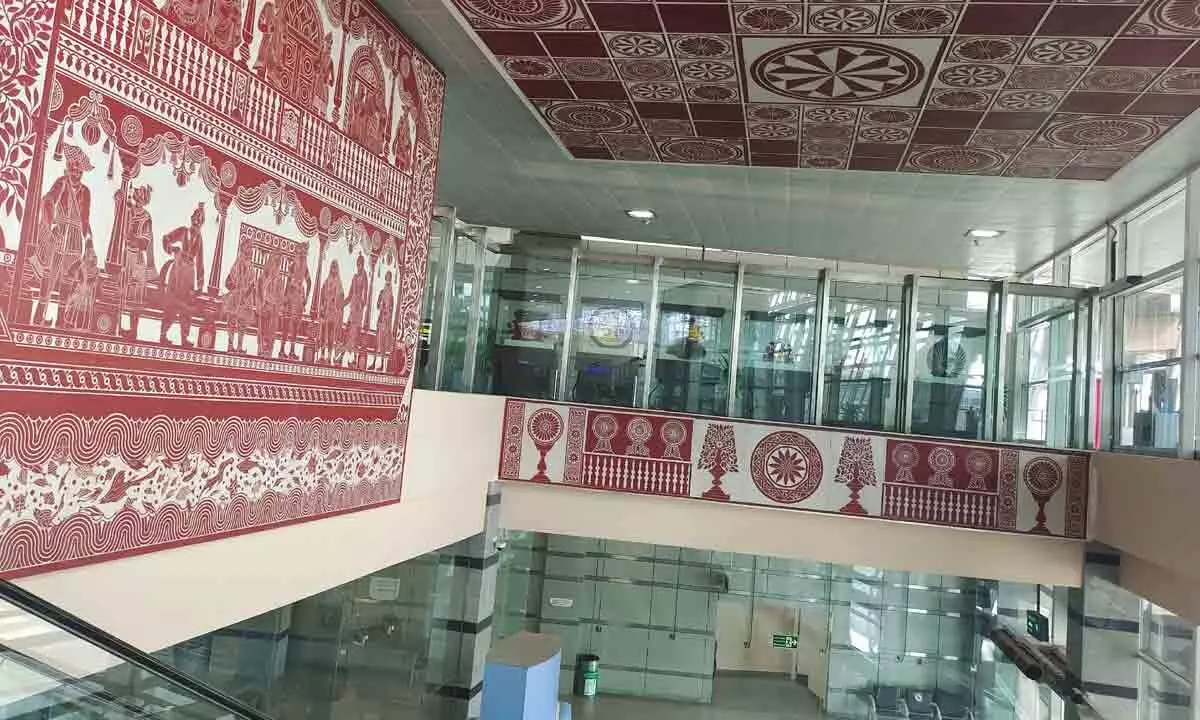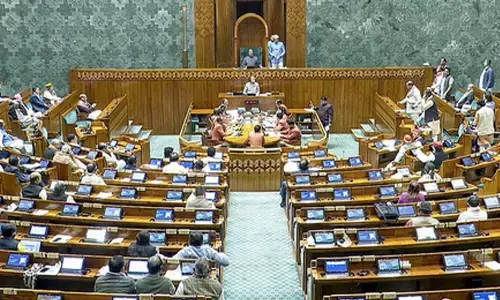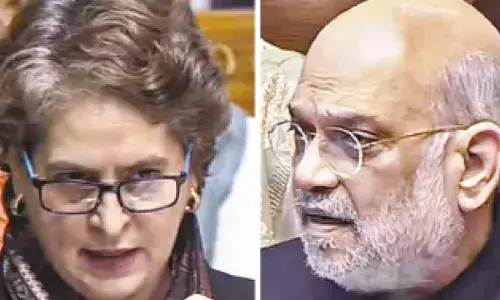Timeless 'Kaavi Kala' murals adorn Mangaluru airport

Timeless ‘Kaavi Kala’ murals adorn Mangaluru airport
The Kaavi Kala the only art form from the Konkan coast is now on the revival path from the beginning of the 21st century.
Mangaluru: The Kaavi Kala the only art form from the Konkan coast is now on the revival path from the beginning of the 21st century. The last classical Kaavi Kala artist died some 70 years back taking along with him the secret ingredient that made Kaavi Kala an everlasting mural art in the temples and houses of art lovers on the Konkan Coast for at least the last four centuries. But thanks to the Mangaluru International Airport, the walls and roof of a particular section of the airport now have huge murals made from Kaavi Kala. It has been hailed as a true revival spirit of a dying art.
Rare and local art forms are finding prime space at Mangaluru International Airport. A case in point is the fact that people can see the near-extinct Kaavi Kale art adorn the ceiling, wall, and beam of the current international busing arrival area. Created by Kaavi Kale artist and research scholar Janardhan Rao Havanje, the art form is the latest addition to the varied and growing art form repertoire at MIA.
Researcher of Kaavi Kala late Krishnanand Kamat in his book 'Kaavikale' in Kannada and 'Konkyanigele Kavikala' in Konkani has elaborately researched the practice of Kaavi Kala. "The evolution of Kaavi Kala had been attributed to the necessity to preserve the art, nothing else but Kaavi Kala could sustain the high moisture content on the coastal region, which is why many mural art forms were restricted to the interior Karnataka. "Artists of Kaavi Kala in the classical times used an amalgam of jaggery, white sea shells, red pigment drawn from mud and finely ground sand and many other ingredients which we do not know much about now.
The last traditional Kaavi Kala artist knew about this special amalgam is said to have died 7 decades back,since than artists have taken to the modern materials like canvas, paper, and mainly acrylic, oil and water paints as their medium. I know this is painful for artists for losing the traditional medium of murals and the special natural amalgam of pigments.
Kaavi Kale is the indigenous architectural ornamentation technique of the Konkan coast in India. Kaavi means red oxide and kale means art form, says Janardhan ao Havanje, who has co-authored a treatise on this subject Caroline D'Souza. The art form has been suspended some 15 metres from the ground with new frames on the ceiling and on the wall panelling specially done for the walls.
Stakeholders have appreciated the workmanship of Janardhan Rao Havanje. While SCube, a leading local art gallery has thanked the airport for giving space to different art forms that form part of local culture, another stakeholder expressed happiness that people such as Janardhan Rao Havanje have dedicated their lives to showcasing such cultural art forms to the modern society.
Kaavi Kala is a melange of an ancient form of art that has been a medium for depicting the great epics of India and the mystic mythologies and legends. It is basically the mural art form, all along the coast of Karnataka, Kerala, Goa, Maharashtra and Gujarat which is sparsely populated by the Saraswath communities (Saraswaths are the original inhabitants of river Saraswathi), along with their migration southwards the Kaavi Kala also moved South and was practiced in parts of Maharashtra, Goa and Karnataka.
In the last part of the 20th century due to loss traditional knowledge being lost, the art form had become stagnant for some time. But it has now resumed its journey towards revival, artists, researchers and Kaavi Kala aficionados in both social and religious segments



















